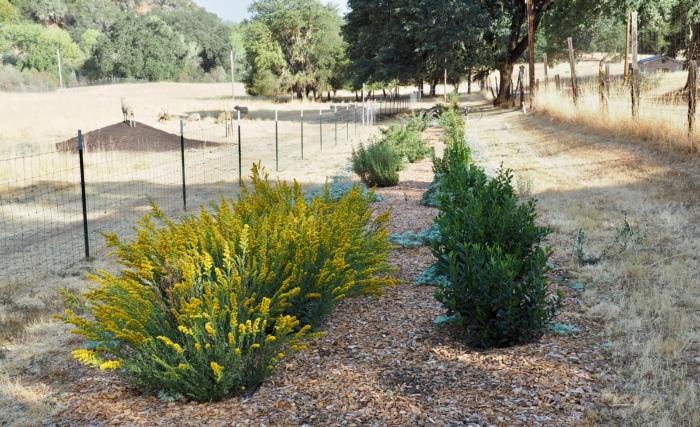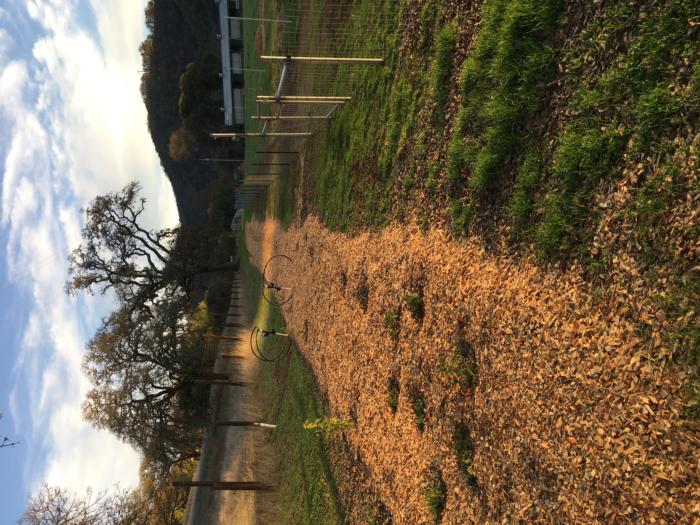Hedgerows in Northern California Rangelands

Seventy percent of California's livestock forage is generated from range systems. Grazing pressure in these systems often discourages native oak and shrub establishment, leading to losses in biodiversity, declines in soil health and decreases in soil carbon. Restoring native vegetation through the development of hedgerows can increase ecosystem and soil health while allowing most of the landscape to remain in pasture so livestock producers can continue generating economic profits. In addition, well planned and implemented hedgerows can provide additional economic benefits through the production of cash crops (herbs, flowers, fruit, nursery stock), reduced heat and wind stress on livestock, and increased retention of soil and water.
Current research is underway to quantify the impacts of a newly-established hedgerow on historically grazed sheep pasture at HREC. Researchers are not only measuring changes in soil carbon and health, but also insect pollinator and bird diversity, and economic variables that which will give insight into the costs of implementing hedgerows across Californian rangelands. The hedgerow is planted with a wide diversity of California native plants so that it also serves as a demonstration of possible species choices for a range of benefits and climate types.
Researcher Spotlight: John Bailey

With a BA in Biology and an MBA in Sustainable Business, John's research focus blends his interests in regenerative agriculture with his skills in business and strategic planning. He aims to produce results that support farms and sustainable land use across California. John has also been the Director here at HREC since 2018. You can reach John at jtbailey@ucanr.edu.
Learn More!
Want to plant your own hedgerow? The Community Alliance with Family Farmers (CAFF) offers a free in-depth manual to help you choose and care for regionally appropriate plants that attract beneficial insects and prevent erosion. You can also apply for hedgerow funding through the CDFA Healthy Soils Program.


